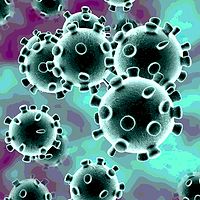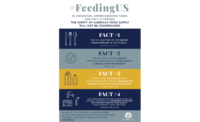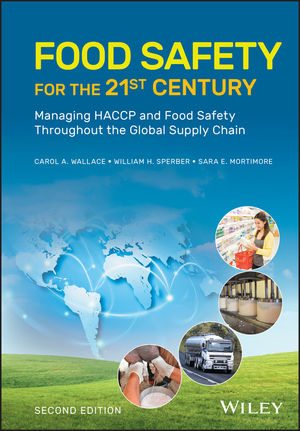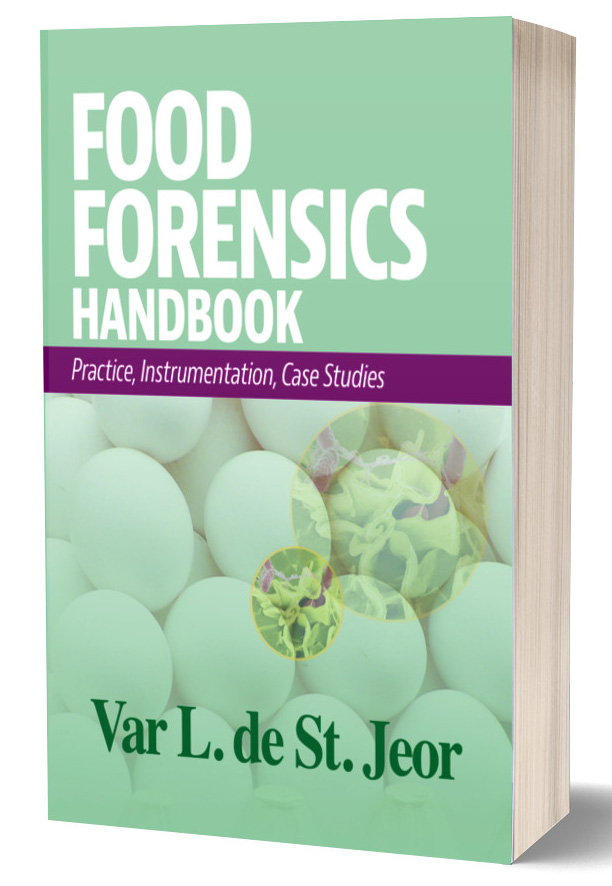The 2019-nCoV Coronavirus Is Not a Food Supply Threat

China has a real public health crisis with the ongoing novel coronavirus (2019-nCoV) outbreak. The outbreak has become an epidemic, having spread quickly across many parts of China. The U.S. Centers for Disease Control and Prevention (CDC) and the World Health Organization (WHO) are watching epidemiological data for signs this could become a pandemic.
Food and beverage companies, including Starbucks, YUM (KFC and Pizza Hut), Dairy Queen, and McDonald’s, have started to temporarily close stores in affected areas of China, causing mounting financial losses. The economic losses could be substantial if the epidemic is sustained for weeks. For example, Fox News reports that China’s nearly 5,000 Starbucks stores brought in 10 percent of the company’s revenue during last year’s fourth quarter.
Food Safety Must Rely on the Facts
It is critical for food companies to be armed with the facts. The coronavirus outbreak in China is not, nor will it be, a threat to the U.S. or global food supply. A recent article published by The South China Morning Post entitled, “Coronavirus: scientists identify possible new mode of transmission in human faeces,” potentially could cause confusion by implying a fecal/oral route of virus transmission.
Statements from the article are followed by facts:
Article: “Researchers at Shi Zhengli’s Laboratory at the Wuhan Institute of Virology, which is administered by the Chinese Academy of Sciences, found nucleic acids in stool samples and anal swabs from a group of coronavirus pneumonia patients in the city, according to a report from state news agency Xinhua.”
Fact 1: Coronavirus is spread primarily by respiratory transmission when infected individuals sneeze, cough, or contaminate surfaces with sputum or mucous.
Fact 2: The presence of nucleic acids in the feces of infected patients is fully expected, as virus-contaminated sputum and mucous is swallowed by the infected individual, passing into the gastrointestinal tract.
Fact 3: The presence of nucleic acids in feces does not necessarily mean the virus is intact and therefore infective. Virus inactivation is expected at low pH, as in the stomach.
Article: “Doctors treating the man, the first confirmed case in the country, published details of their findings in the New England Journal of Medicine on Friday, though cautioned extrapulmonary detection of viral RNA does not necessarily mean the virus was present.” Comment: Concur.
Fact 4: Fecal/oral transmission is possible if feces contaminate food handling surfaces or products. This route of transmission appears negligible at this time, given current data. Epidemiological monitoring continues. Updates will be provided as new information and data become available.
Article: “The clinical significance of coronavirus RNA outside the respiratory tract was unknown at this time, the doctors said.” Comment: Concur.
Fact 5: This primary respiratory route of person-to-person Coronavirus transmission remains the same.
Given the seriousness of the situation, one would hope the public focus would be on medical facts. Unfortunately, social media came into play with memes linking Corona Beer and coronavirus. Given the association between Corona Beer and limes, subsequent memes combined Corona Beer, coronavirus, and Lyme disease. The problem with this joke is that some portion of the world community (dare we say the uninformed or under-informed) actually started to take the joke seriously, causing confusion and inadvertently damaging a respected beverage brand. Corona Beer is just the latest example of a quality brand that finds itself in a messaging war.
With this in mind, we state categorically:
• Corona Beer is not the cause of coronavirus.
• Corona Beer has never had any association of any kind with the coronavirus known as 2019-nCoV.
The Importance of Science in Messaging and Counter-Messaging
The success of any food company depends on the development of a brand, which is bolstered by safe, high-quality, and high-value food products. The food becomes the brand, and the brand becomes the food. In this case, the beer is Corona and Corona is the beer.
Even high-value, premium food products depend on customer trust, which eventually attaches to the brand. A single food-safety event can erode the brand. A food company’s response to such an event largely determines the impact on the bottom line. If there is a negative impact, the company’s response helps determine how long that impact will last. Importantly here, this is not a food safety event. It is a “mistaken perception” event, which makes the brand-defense message even more important.
Companies have to rapidly take over the messaging, turning any negative message around in some way to regain advantage. Think Tylenol in 1982. Familiarize yourself with the events surrounding the Tylenol poisoning scares or the public relations response by the parent company, Johnson and Johnson. This is probably the best case of a rapid turn-around counter-message, which literally saved a brand.
There are many lessons to be learned. Fortunately for Johnson and Johnson, social media didn’t exist, and the web as we know it today had not yet been invented. The messaging, both positive and negative, moved through the mainstream media. It was slower. Today, messaging moves at the speed of electrons. Reaction time must be exponentially faster.
Negative memes and social-media-messaging disasters can happen to any food company at any time. The only reason the current messaging problem occurred is that the beverage and the disease both use the word “corona” (which is simply Spanish for “crown”). The coronavirus or “crownvirus” was named for its crown-like appearance under electron microscopy.
Pure happenstance led to this messaging problem. So what should a food company do if they encounter a similar messaging problem?
Counter-Messaging Rules of Operation
Rule Number 1: Always lead with the facts.
Rule Number 2: Follow Rule Number 1.
Rule Number 3: Be totally transparent and open. Hide nothing!
Addressing Fear in Counter-Messaging
Fear can be thought of as stress or anxiety related to a threat. Usually, the source of the stressor is external to the individual, oftentimes related to a specific person (e.g., an abusive partner) or a group of people (e.g., criminals). Even though a threat might not be real, the consequences are real. For example, a child might be afraid of “monsters under the bed.” While the source of fear is imaginary, the impact on the child cannot be dismissed. Fear can cause an individual to avoid some people, situations, or activities in an attempt to avoid the perceived threat.
At the same time, fear is not simply emotional. In some ways, it is a normal part of social interaction. Cultural influences can affect the sources of concern as well as potential responses. Take, for example, the snake. Whether venomous or nonvenomous, many would say, “kill it.” People understand anxiety related to the culturally-infused threats of snakes, butterflies, or even clowns, and in effect the fear is viewed as normal.
Potential threats to health (think of the Tylenol example) or to the food supply also can take on significance that goes beyond individual concerns. The name of a food product, Corona Beer, was incorrectly associated with a serious medical condition. This example illustrates the difficulty of anticipating such associations, and underscores the need to be ready to respond rapidly and in a transparent fashion.
Recommendations for Food Companies
1. Food corporation workers exhibiting symptoms consistent with respiratory or intestinal infections should be excluded from food-handling areas and processes until they have been medically assessed and released to return to work.
2. Food corporation workers who have recently traveled from China, and in particular through the affected regions, should consult CDC’s nCoV webpage here.
3. Travel to China is not recommended for food corporation employees at this time. CDC’s travel warning is “Level 3, Avoid Nonessential Travel.” Key points are:
• CDC recommends that travelers avoid all nonessential travel to China.
• There is an ongoing outbreak of respiratory illness caused by a novel (new) coronavirus that can be spread from person to person.
• Chinese officials have closed transport within and out of Wuhan and other cities in Hubei province, including buses, subways, trains, and the international airport. Other locations may be affected.
• Older adults and people with underlying health conditions may be at increased risk for severe disease.
• The situation is evolving. This notice will be updated as more information becomes available.
Likewise, the U.S. State Department has issued a LEVEL 4: Do Not Travel Advisory: “Do not travel to China due to the novel coronavirus first identified in Wuhan, China. On January 30, the WHO determined the rapidly spreading outbreak constitutes a Public Health Emergency of International Concern. Travelers should be prepared for the possibility of travel restrictions with little or no advance notice. Most commercial air carriers have reduced or suspended routes to and from China. Those currently in China should attempt to depart by commercial means. U.S. citizens remaining in China should follow guidance from the CDC and Chinese health authorities. We strongly urge U.S. citizens remaining in China to stay home as much as possible and limit contact with others, including avoiding large gatherings. Consider stocking up on food and other supplies to limit movement outside the home. In the event that the situation deteriorates further, the ability of the U.S. Embassy and Consulates to provide assistance to U.S. nationals within China may be limited.”
Food corporations should continue to practice standard food handling/food safety protocols and processes. No enhanced standards or practices are necessary at this time. Current food handling/safety protocols are designed to limit the spread of bacterial and viral pathogens.
Robert A. Norton, Ph.D., is a microbiologist and professor in the Department of Poultry Science at Auburn University who consults widely on food defense. He can be reached at nortora@auburn.edu. Emefa A. Monu, Ph.D., is an assistant professor of food microbiology in the Department of Poultry Science at Auburn. Her current research focuses on alternative intervention methods to reduce bacteria and fungi in food, including the development of natural antimicrobials from plant and bacterial sources and the utilization of novel non-thermal processing techniques. She can be reached at eam0063@auburn.edu. Greg S. Weaver, Ph.D., is an associate professor in sociology at Auburn. His primary research and teaching interests include lethal violence and research methods. He can be contacted at weavegs@auburn.edu.
Looking for a reprint of this article?
From high-res PDFs to custom plaques, order your copy today!








